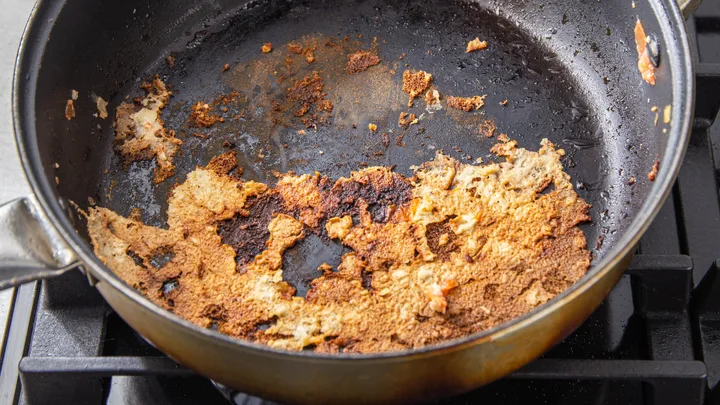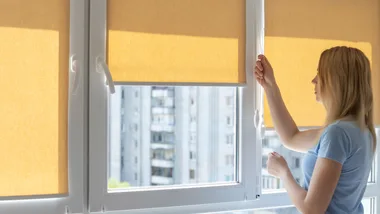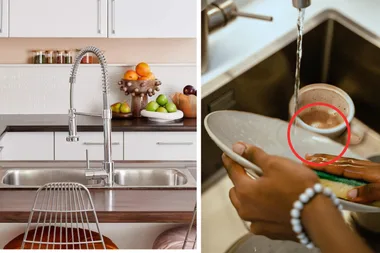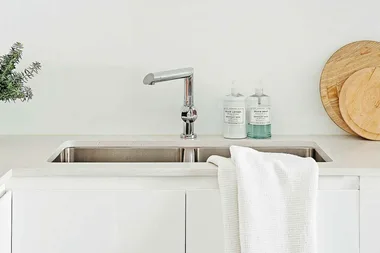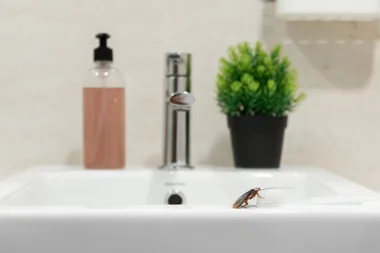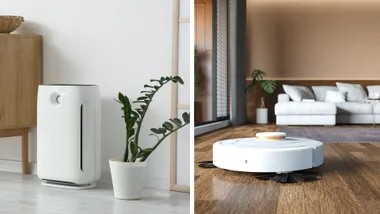Burnt dinner happens to the best of us — but it doesn’t have to mean the end of your favourite saucepan.
Whether it’s a scorched pasta pot, blackened rice pan, or the dreaded burnt milk layer, the proper technique can bring your cookware back to life. Below, we’ve rounded up five of the best methods to clean a burnt pot, including natural solutions like vinegar and baking soda, chemical cleaners, and even a surprising hack using garden dirt (yes, really).
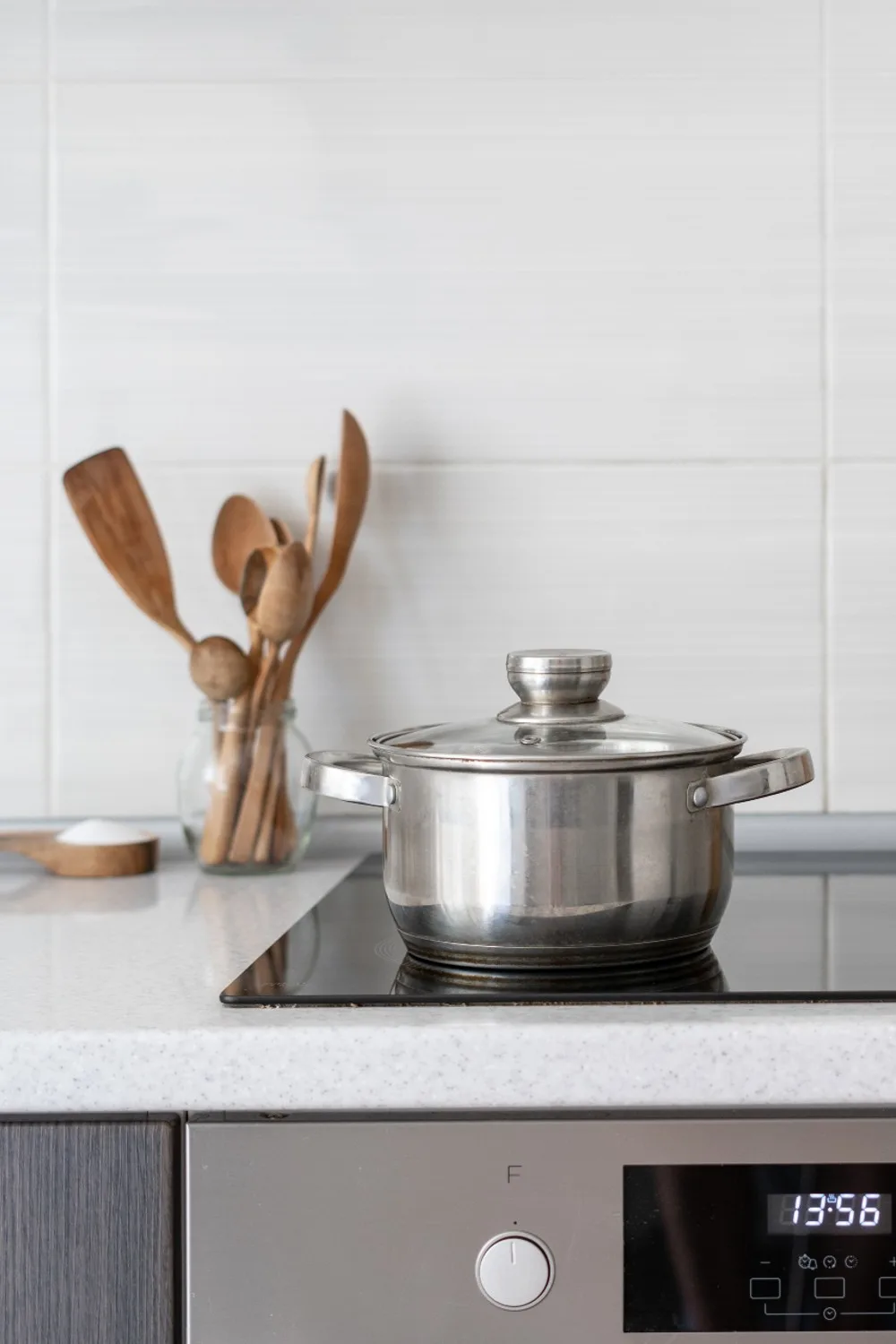
What’s the best way to clean a burnt pot?
It depends on the material (stainless steel, cast iron, non-stick). Here’s what works best for each.
1. Simmer with hot water and baking soda (Best for: Stainless steel pots)
The faster you act, the easier it will be to remove burnt food from a pot. A simple way to clean a burnt pot is to use hot water. If you have a stainless steel or enamel pan, place it on your stove and turn on the heat. Once the pan is hot, pour in a cup of water and let it simmer for a bit. You can add lemon or baking soda if you like. Scrape away the area to loosen the muck.
2. Vinegar and baking soda fizz (Best for: burnt-on food and black stains)
According to the Queen of homemaking, Martha Stewart, the best way to clean the burnt stuff off the bottom of a pot is “patience and persistence”.
- Dislodge as much of the food as you can with a sponge or kitchen brush. “Removing as many stuck-on bits as possible from the start makes the rest of your cleaning work less challenging,” Martha said.
- “Then, consider the material of your cookware. If the pan or pot is cast iron (but not if it’s enamelled cast iron), cover the burnt areas in coarse salt and scrub with a dishcloth. Otherwise, fill the pot with water and add 1/4 cup baking soda.”
- Bring to a boil, then turn off the heat and let the pot soak for an hour.
- Spill out the liquid, scrape off any remaining food bits with a wooden spoon or rubber spatula. Avoid using metal utensils, as they can permanently scratch the surface. If food or discolouration remains, repeat the process.
3. Dishwasher tablet method (Best for: stubborn, baked-on grime)
While the above is the natural way to fix a burnt pot, you could also do so with chemicals.
- Allow the pan to cool.
- Fill it with water, a dishwasher tablet and a tablespoon of biological washing powder.
- Bring to a boil, then simmer for around 10 minutes on the hob.
- The burnt-on grime should melt away – though for really bad burns, you might need to repeat the process more than once.
4. The viral dirt method (Best for: stainless steel or enamel pots)
An alternative cleaning method was also recently posted by Italian chef and YouTuber Pasquale Sciarappa.
Sharing a video of the hack called “Cleaning my pot with dirt” on his YouTube channel, OrsaraRecipes, Pasquale uses dirt from the garden mixed with a bit of water to scrub his burnt and stained steel pot. After a few seconds of scrubbing, he rinses the pot with water, and it comes up sparkling clean, looking as good as new.
In the video, the Italian chef explains that he was taught the cleaning technique in Orsara di Puglia, and explained that it is much more effective than using products such as “Ajax”.
Since posting the video, it has gone viral, racking up 42,000 views, but it’s not a method for everyone.
5. Coarse salt and elbow grease (Best for: cast iron pans)
To clean burnt cast iron pans, skip the water — moisture can damage the seasoning. Instead, sprinkle coarse salt directly onto the burnt area to act as a natural abrasive. Using a damp dishcloth or paper towel, scrub the surface to lift the stuck-on residue. Once clean, wipe the pan thoroughly and apply a light layer of oil to keep it seasoned and rust-free.
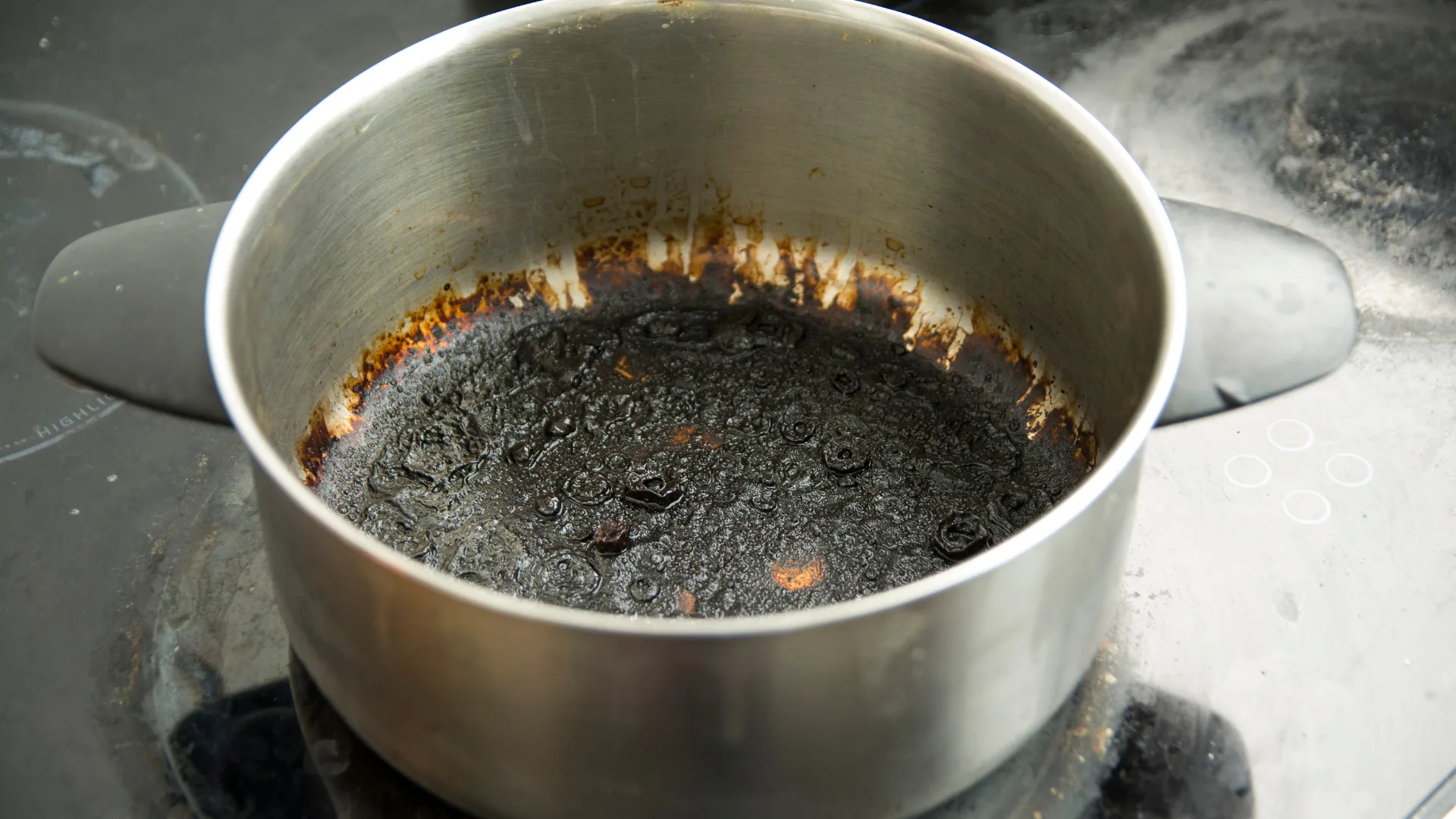
Can you clean a burnt pot without baking soda?
If you’re out of baking soda or prefer an alternative method, there are several effective options you can try. One of the easiest is to fill the burnt pot with hot water and a generous squirt of dish soap, then bring it to a gentle boil and let it simmer for 10 to 15 minutes.
This helps loosen stuck-on food without harsh scrubbing. For a natural option, cover the base with lemon juice and let it soak for an hour before gently scrubbing. And believe it or not, many swear by the dryer sheet hack: fill the pot with warm water, add a dryer sheet, and let it sit overnight. The softening agents help lift grime with minimal effort.
Tips for cleaning different types of cookware
Not all pots and pans are created equal — so it’s essential to clean them the right way to avoid damage. For stainless steel, boiling water with baking soda is one of the safest and most effective methods for cleaning. If you’re using a non-stick pan, avoid using anything abrasive; instead, soak and wipe with a soft sponge to protect the coating.
When cleaning cast iron, keep it dry. Sprinkle coarse salt over burnt spots and scrub with a cloth, then re-oil to prevent rust. Ceramic pans can usually be cleaned with a gentle sponge and a vinegar soak to break down stains. And if you’re using aluminium cookware, skip acidic ingredients like vinegar or lemon juice, which can cause discolouration.
